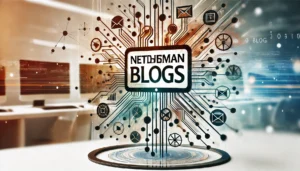
The last moments of your speech are like the last notes of a symphony-they hang in the air, and they stick with your audience well after you walk off the stage. It is scientifically proven that the beginning and end of presentations really stick with people, and the closing has specific effects for motivating action and emotionally engaging the audience. Read more at this website.
The Power of the Echo Effect
A powerful close triggers what I like to call the “echo effect”-your core message resonating with your listeners in such a way that they do something different because of it, either feel different or even think differently. Similar to how a bell rings after being struck, your final words should go on doing their magic after you have spoken.
The Must-Know Closing Techniques
Return to your opening story or metaphor, but with a twist that shows transformation or deeper meaning. If you begin with a question, answer it. If you started with some personal anecdote, show how it concluded. This provides a satisfying sense of closure and also reinforces the core message.
Example: If you began with the story of climbing a mountain even when scared of heights, conclude by relating that personal triumph to the possibility that your audience, too, can reach beyond their limitations.
The Call to Action
Turn inspiration into motivation by providing your audience with concrete, tangible steps they can follow. Vague messages like “do better” or “make a difference” are not helpful. Instead, provide specific actions to be taken within the next 24-48 hours.
Make your call to action:
- Abrupt
- Specific
- Attainable
- Measurable
- Relating to your key message
The Power Quote
Conclude with a sticky quote that summarizes your message. But avoid those overused, trite quotes from famous people everyone uses. Instead, think about:
- A surprisingly powerful statement from an unsuspecting source
- A provocative question
- A personal mantra you have coined
- Words from someone directly relevant to your audience
The Future Vision
Paint the picture of what success will look and feel like when your audience accepts your message. Use sensory language and emotional triggers that make this vision real and reachable.
How to Close Like a Pro – Advanced Strategies
Here they are.
The Emotional Bridge
Connect your message with the deepest aspirations of your audience on an emotional level. This isn’t about manipulation; this is about helping people bridge the gap between their personal dreams and the opportunity you present.
Example: “Imagine walking into your child’s room five years from now, seeing them confidently pursuing their dreams because you made the brave choice today too.”
The Callback Collection
Reference key points from throughout your speech, weaving them together into a powerful concluding message. This reinforces learning and shows how all the pieces fit together.
The Challenge Close
Directly challenge your audience. Be bold but achievable, specific but universal. Frame the challenge as an opportunity to grow, not a test of worth.
Technical Elements of Conclusion
Here they are.
Vocal Dynamics
- Your voice should signal the impending close:
- Slow your rate slightly
- Drop your pitch
- Insert strategic pauses
- Strong, purposeful phrasing for the ending
Body Language
- Your body should reinforce your conclusion:
- Centered and grounded standing position
- Meaningful eye contact
- Purposeful gestures
- Hold your final pose briefly
Common Closing Mistakes to Avoid
Here they are.

The Fizzle Out
Never end with “Thank you” or “That’s all I have.” These weak closings undermine everything that came before.
The New Information Trap
Don’t introduce new concepts in your closing. This is a time for reinforcement and inspiration, not education.
The Apology Close
Never apologize for going over time or for any part of your presentation. End with strength, not regret.
The Rush Job
Don’t speed up your ending because you’ve run out of time. Better to adjust your middle content and preserve a powerful close.
HINTS FOR PREPARING YOUR CLOSE
The Three-Part Close Formula.
- Signal the end is near / transition phrase or shift in energy
- Deliver your final message/core takeaway
- End with a memorable statement / emotional punctuation
REHEARSAL TIPS
- Practice your closing more than any other part
- Record yourself and then analyze your delivery
- Test different variations to find what feels most natural
- Time your closing to ensure consistency
- Practice with various audiences to gauge the impact
Situational Adaptations
Virtual Presentations.
For online speeches:
- Use stronger vocal variation to compensate for reduced physical presence
- Consider visual reinforcement of key closing points
- Plan for technical delays or glitches
- End with clear next steps for digital engagement
Short Talks
For brief presentations:
- Start preparing for your close earlier
- Use simpler closing techniques
- Focus on a single clear takeaway
- Make your call to action immediately actionable
The Psychology of Closure
Understanding why certain closes work helps you craft better endings:
- People seek completion and resolution
- Emotional peaks are more memorable than logical arguments
- Connection to personal values drives action
- The clear structure provides security and satisfaction
Beyond the Speech
Your closing should set up what happens next:
- Provide clear follow-up instructions
- Share relevant resources or materials
- Create accountability structures
- Set expectations for the next steps
Remember, a great close is not about words; it’s about the moment when your message becomes a story that your audience owns. When done right, this close will be the bridge from your speech to the audience’s actions that ensure your message continues to live long after the final word has been spoken.
Your closing is a final gift for your audience. Make that gift memorable, meaningful, and one that truly matters.




